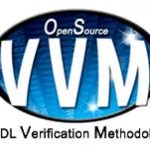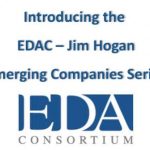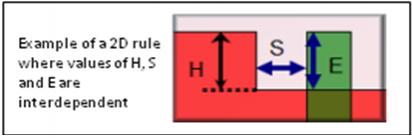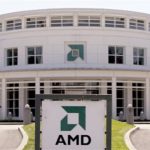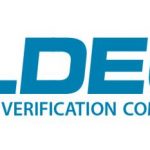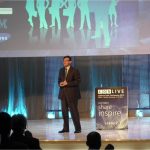Before going to Munich to attend to CDN-Live, I took a look at the agenda to figure out which presentations to attend, and I must say it was not so easy to choose: CDN Live agendais dense, with multiple tracks running in parallel (Custom Design, Digital Implementations, Design IP, Functional Verifications and Verification IP, PCB design… and more) and presentations given by Cadence, by partners like Global Foundries, IMEC, ARM, or Universities and by Cadence’s customers, TI, Renesas, NXP, ST-Ericsson to name a few.
The first part of Tuesday started with a 30 mn talk from Lip-Bu Tan, the CEO of Cadence who has joined the company three and half years ago to put the company back on track and this was a real challenge as, before his venue, Cadence was about to lose credibility (and soul), due to some weird accounting approaches. I don’t know much about it, just that the technical community, inside and outside the company, was confused. Then, at the beginning of 2010, came “EDA 360” initiative. To summarize, EDA 360 reflect the vision about the future of Electronic design, it says that supporting H/W design only is not enough, and that large EDA companies will have to offer the right tools to manage H/W and S/W development, design verification and system validation. Because this vision was proposed with a superb marketing campaign, it generated high expectations, and finally some deception… By definition, a vision reflects a long term view of where you want to go within, say, 10 years, not the company’s product port-folio today or even tomorrow (next year). So, I was pretty impatient to listen to Mr. Lip-Bu Tan, and to know what were the key messages delivered by Cadence management!
The show took place in an amphitheatre; the ten meters high backdrop of the stage was made of multiple LED panels changing color (depending on the speaker) – a classic EDA show. Then Mr. Lip-Bu Tan started talking: about Cadence, putting the focus on Cadence technical community excellence (which is true, according with my own experience when running technical discussion with product marketing person from the company). Talking also about Cadence’s customers, saying that the company want to serve them well, even when their demand is challenging, adding that he is travelling a lot to meet them. You can argue that it’s easy telling, but the message itself is very positive.
Mr. Lip-Bu Tan also said that he is a VC, and as being involved as an investor with various Electronic companies worldwide, he tries to make sure that, first they use Cadence tools, second that they can get the higher satisfaction from the tools, which means for Electronic companies, release a product at spec and reach their time to market objectives. I must say that I completely buy such an argument! When the CEO is also a customer for the products sold by the company he is running, this should increase the level of confidence customers may have in the company.
Another word was part of the message: “humble”. I heard it the day before the show, from a Cadence employee talking about the CEO. I also heard it from the CEO during the show, when he said that this should be the behavior of Cadence employees when dealing with customers. You may think this is easy telling again… Maybe, but some of the EDA industry representatives have been known for their… arrogance in the past, then, indicating the opposite direction should be positively perceived by Cadence customers!
Because he presented himself as a VC, Mr. Lip-Bu Tan was smart enough to leave the highly technical content to the next person on stage, Tom Beckley (Sr VP, R&D, Custom IC and Signoff, Silicon realization Group). I will not go into the details of this presentation, as EDA tools development is not my area of expertise. I would like to mention that Tom has specially thanks Jacques-Olivier Piednoir, who I know since my very first job in Matra Harris Semiconductor, and who has helped me a lot, back in 1986, to prepare my first trip in the Silicon Valley to present a paper at the 3[SUP]rd[/SUP] Multilevel Interconnect Conference (multilevel was meaning the second metal level, for a 2 micron technology, at that time!). And because we are leaving in a small world, I should mention that Jacques-Olivier has worked under the direct responsibility of Paul McLelan, it was in the 80’s at VLSI Technology!
The show ended with a very informative Industry keynotes from Luc Van den Hove, CEO of IMEC, dealing with the various prospective developments in CMOS technologies, like:
- Enabling lithography: 193nm immersion litho (incl. double patterning), EUV litho
- New materials in devices: high-k, strained Si
- New device concepts: 3D, FINFET, tunnelFET
- Advanced memory: DRAM, floating gate, resistive RAM
- Advanced interconnect: 3D, Cu/low-k
Then, the conference started, with multiple tracks taking place in smaller rooms. I have just attended a few presentations about DDRn Controller and WideI/O IP, both very technical and certainly useful for the design community. If I have to give an evaluation, I would say 85% technical and only 15% (or less) marketing. I told you, Cadence want to pass the message that the company has renewed, focus on the technical content and tell their customers that they want to serve them well… as a customer, that’s the kind of message I like to hear! Yes, I had a free lunch, but no, that’s not the reason why I write this way…
Another blog will be fully dedicated to their NVM Express subsystem IP product launch, happening during CDN Live, which could be a very interesting move on the (IP and VIP) chess game currently running between Cadence and Synopsys… stay tuned!
Eric Estevefrom IPNEST



